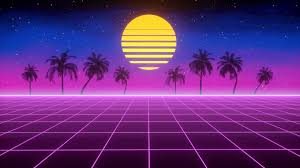Genre-based projects provide a useful set of creative constraints for music tech students. The book Electronic Music School: A Contemporary Approach to Teaching Musical Creativity by Ethan Hein and Will Kuhn is great resource for getting started with implementing these types of projects. In the book there are ready-to-go plans for a variety of genre projects such as, house, trap, future bass, lofi and vaporwave.
At some point, you’re probably going to need to design your genre-based projects. It’s a good way to keep up with evolving trends or find new ways to connect with the tastes of different students. In their book, Hein & Kuhn have a helpful section called “The Project Formula” that outlines some of key aspects to designing a successful project. In their words, “Music concept + technology concept + fun hook = successful project.” When approaching a genre-based project, most of the music and technology concepts can be brought into focus by identifying some of the key tropes in a particular genre.
I’ve been wanting to design a synthwave project for awhile and I finally got around to putting it together this year. A lot of students will be familiar with the general sound and aesthetic of synthwave as it gained popularity in the 2000s through videogames such as GTA: Vice City and movies like Drive or shows such as Stranger Things. This can provide a fun hook since students will be working toward creating something they might have familiarity with already or at the very least is going to sound like a complete track.
Another advantage of synthwave music is that it evolved in parallel with the proliferation of DAW’s in the 2000’s, making it a seamless fit for students creating in a classroom where students might be using Ableton, Logic, etc. Ableton, in particular, included the Drift instrument in all of their Live 11 versions, which is an amazing device for approximating retro analog synth sound of the 80’s. If students have access to the Push or MIDI controllers, they can also practice the workflow or recording, quantizing and layering multiple synth parts.
In order to get the project ready for students, I had to pilot creating a synthwave track myself and then build a Live Set project template that could provide some scaffolding for students once they made their own projects. To begin with, I started to a deeper dive on synthwave music and especially listening to more. I liked this Spotify playlist in particular:
After a lot of listening (especially in the car to and from school), I wanted to see how other producers/YouTubers were breaking down how to make a generic synthwave track. There are of course a ton of tutorials out there, but I found this blog post by Native Instruments to be one of the best: What is synthwave music? How to make a synthwave track. I liked this guide because it includes a nice introduction with a brief history and some quintessential listening examples. The post continues with a relatively clear step-by-step process to make in my opinion a convincing and successful sounding synthwave track.
I ended up following most of the steps while adapting the process for use with Ableton Live and the Push. In order to make it work my context, I had to spend some time selecting and editing the devices and sounds I wanted to use in Ableton. First, I built a custom drum rack to evoke a stereotypical 80’s drum sound, complete with gated reverb and some other tweaks to the Ableton stock 707 drums. Next, I went through and created each of the synth tracks from driving bass to sweeping pads and a variety of leads. I was able to make all of the synth sounds by beginning with the different Drift presets and then adjusting from there.
Once the Live Set template was complete I could pilot the project myself and I created a short synthwave song. Overall, I was satisfied with the results and I was convinced that students could create their own successful projects with the help of the Template Live Set and a guide.
For my project guide, I decided to build it using Craft which I’ve become a huge fan of this year. I had the guide include a brief introduction with listening examples, followed by step-by-step instructions with embedded YouTube videos of how to make the different elements. I adjusted some of the instructions from the Native Instruments guide, such as giving students more general guidelines for coming up with their synth patterns rather than note-for-note prescriptions.
One final note is that the project was targeted toward middle school students who were in their first year Music Tech class, but in the second semester–having already completed several projects using Ableton, Push and following project guides independently or in groups.
You can listen here to what one student made using the template and guide:
Check out the synthwave guide yourself and let me know what you think.

Or download the Ableton Synthwave Template and get started making your own track

